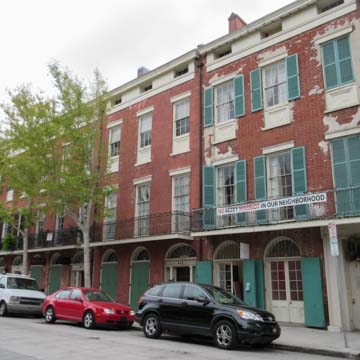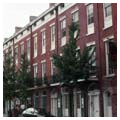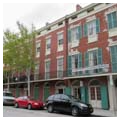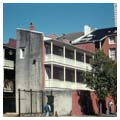Known as the “Thirteen Sisters,” these three-and-a-half-story red brick row houses were built by the New Orleans Building Company, with Daniel H. Twogood, builder, as speculative real estate for Anglo-Americans, who favored this type of dwelling. These side-hall houses have entrance doors set between Ionic columns and a fanlight in the Federal style. Double parlors occupied the second floor, and service wings at the rear faced small courtyards. Built to accommodate the affluent, the houses had degenerated into boardinghouses and tenements by 1900, as the wealthy relocated to the uptown suburbs. The Preservation Resource Center (PRC) purchased 604 Julia in 1976 and renovated it in the 1980s, setting off a wave of renovation of the other houses on this block and the area in general; now, all are renovated, with commercial space on the ground floor and residential above. Architect Henry Hobson Richardson lived at 640 Julia Street as a child, from 1838 to 1841.
You are here
Julia Row
If SAH Archipedia has been useful to you, please consider supporting it.
SAH Archipedia tells the story of the United States through its buildings, landscapes, and cities. This freely available resource empowers the public with authoritative knowledge that deepens their understanding and appreciation of the built environment. But the Society of Architectural Historians, which created SAH Archipedia with University of Virginia Press, needs your support to maintain the high-caliber research, writing, photography, cartography, editing, design, and programming that make SAH Archipedia a trusted online resource available to all who value the history of place, heritage tourism, and learning.











